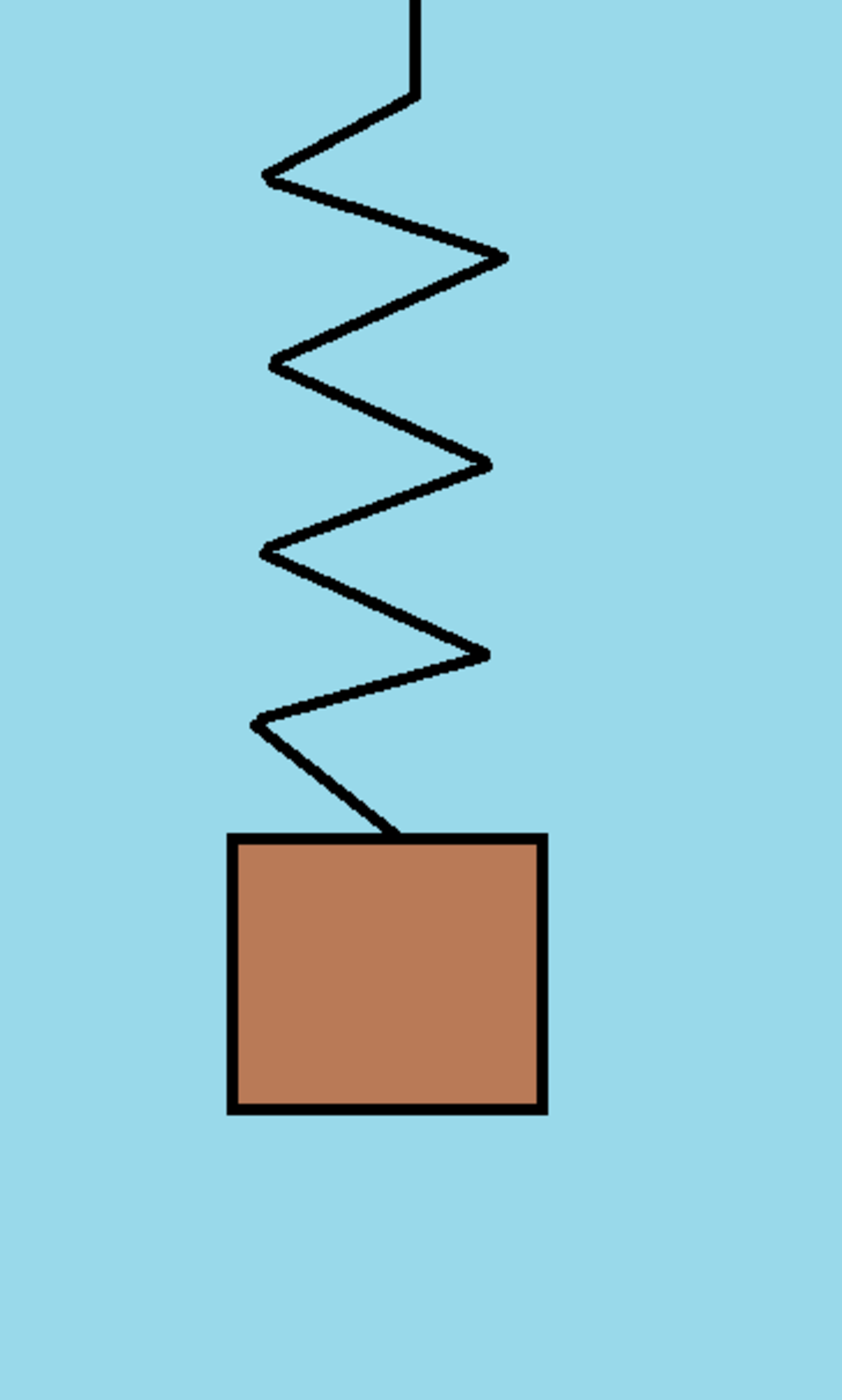Damped Oscillation 12-19-2020 (Part 2)
A block of mass m is connected to one end of a spring of force constant k and natural length L 0 . The other end of the spring is fixed in place at the origin ( x , y ) = ( 0 , 0 ) . At time t = 0 , the block is at position ( x , y ) = ( 1 , 0 ) with velocity ( x ˙ , y ˙ ) = ( 1 0 , 1 0 ) . The ambient gravitational acceleration g is downward, which corresponds to the − y direction. As the block moves, it is subjected to damping forces, such that the total force on it is:
F = F s + F g + F D = F s + F g − D v
In the above equation, F s is the spring force exerted on the block, F g is the gravity force exerted on the block, F D is the damping force exerted on the block, v is the velocity of the block, and D is a damping constant.
At time t = 6 . 6 , how far away is the block from the origin?
Details and Assumptions:
1)
m
=
1
2)
g
=
1
0
3)
k
=
5
4)
L
0
=
1
5)
D
=
0
.
5
6)
Assume standard
S
I
units for all quantities

The answer is 1.971.
This section requires Javascript.
You are seeing this because something didn't load right. We suggest you, (a) try
refreshing the page, (b) enabling javascript if it is disabled on your browser and,
finally, (c)
loading the
non-javascript version of this page
. We're sorry about the hassle.
2 solutions
Season's greetings to you! I have developed an interest in vibrations off late and have posted some exercises recently. Do give it a try if you share my interest.
I used Newton's laws like Karan Chatrath. The second graph of his is a cool result that is typical of a spring pendulum.
In this scenario, representing the equation of motion in vector form is very useful.
Here are the details of my simulation solution:
Spring force
The spring force acts radially inward towards ( 0 , 0 ) , so it is useful to develop an expression for the unit radial vector:
R ^ = ⟨ x 2 + y 2 x , x 2 + y 2 y ⟩
So that at any point in the trajectory of the particle we know the direction that the spring force will act in.
As for the final value of the spring force:
F s = − k ( x 2 + y 2 − l 0 ) R ^
Gravitational force
This one's fairly easy as it's always pointing downwards in our standard basis: [ 0 − m g ]
Drag force
The drag force acts in the opposite direction to velocity and has a constant of 0 . 5 , so:
F d = − D [ x ˙ y ˙ ]
Final expression
m [ x ¨ y ¨ ] = − k ( x 2 + y 2 − l 0 ) R ^ + [ 0 − m g ] + − D [ x ˙ y ˙ ]
Now that we are keeping track of x and y and their derivatives, along with useful vectors, we just have to numerically solve, numerically integrating both components and recombining them into a displacement vector.
Here's the code:
1 2 3 4 5 6 7 8 9 10 11 12 13 14 15 16 17 18 19 20 21 22 23 24 25 26 27 28 29 30 31 32 33 34 35 36 37 38 39 40 41 42 43 44 45 46 |
|
At a general time t , let the coordinates of the particle be ( x , y ) and the velocity components be ( x ˙ , y ˙ ) . The equations of motion are:
m [ x ¨ y ¨ ] = F S + F D + F G ⟹ m [ x ¨ y ¨ ] = − x 2 + y 2 K ( x 2 + y 2 − L o ) [ x y ] − D [ x ˙ y ˙ ] + [ 0 − m g ]
x ( 0 ) = 1 ; y ( 0 ) = 0 ; x ˙ ( 0 ) = y ˙ ( 0 ) = 1 0
Solving this numerically for 6.6 seconds yields the required answer which is:
A N S W E R = x ( 6 . 6 ) 2 + y ( 6 . 6 ) 2 ≈ 1 . 9 7 1
The plot of the particle's trajectory is shown as follows:
One can see that damping makes the motion pretty uninteresting and predictable. The particle eventually settles to its stable equilibrium position of ( 0 , − 3 ) . This is unlike the case of no damping which results is a very nice looking quasi-periodic like trajectory.